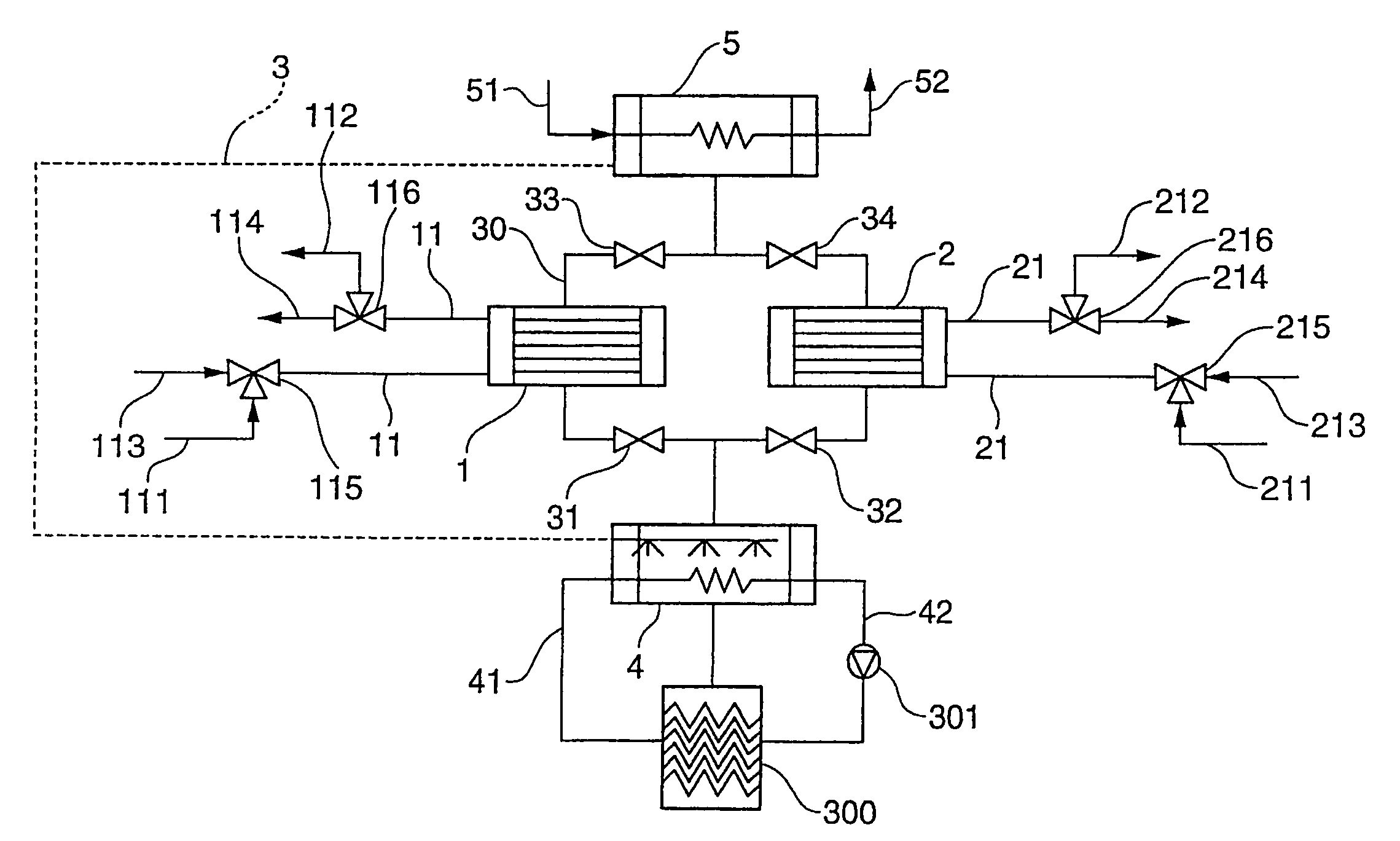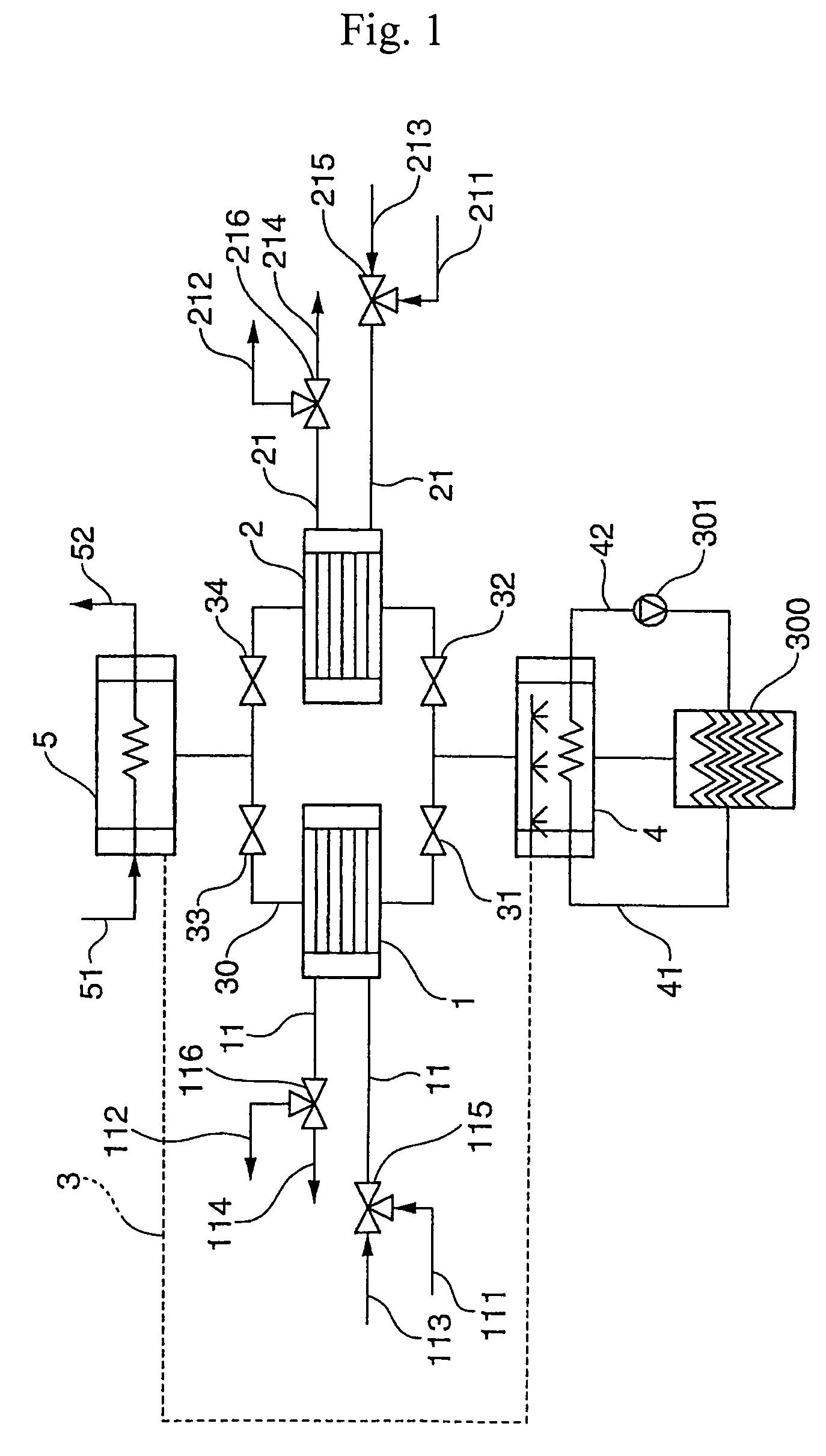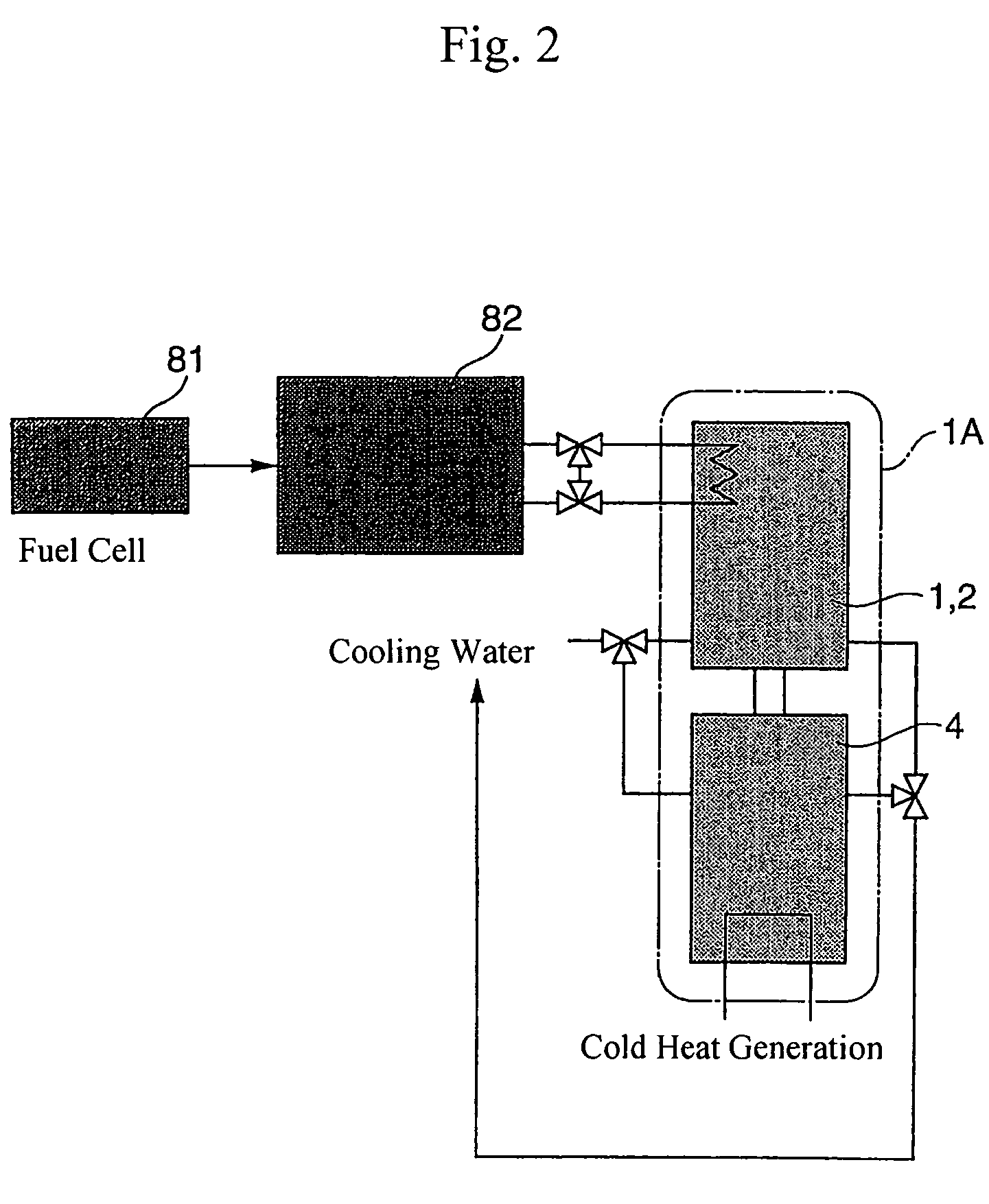Adsorbent for adsorption heat pump, adsorbent for humidity-control air conditioner, adsorption heat pump and humidity-control air conditioner
a technology of adsorption heat pump and adsorption heat pump, which is applied in the direction of heating type, other chemical processes, separation processes, etc., can solve the problems of preventing comprehensive improvement of energy utilization efficiency, high cost of heat recovery and reuse, and inability to use heat generated in these equipments as heat sources, etc., to achieve large difference in water adsorption amount and large output density
- Summary
- Abstract
- Description
- Claims
- Application Information
AI Technical Summary
Benefits of technology
Problems solved by technology
Method used
Image
Examples
example 1
[0168]9.5 g of pseudo-boehmite (containing 25% by weight of water: produced by Condea Coporation) was slowly added to a mixture of 38.4 g of water and 17.6 g of 85% phosphoric acid under stirring. The resultant mixture was stirred for 3 hours, and then mixed with an aqueous solution prepared by dissolving 6.78 g of ferrous sulfate heptahydrate in 36.6 g of water, and further with 10.8 g of triethylamine. The obtained mixture was stirred for 3 hours, thereby obtaining a raw reaction mixture having the following composition:
[0169]0.32FeSO4:0.92Al2O3:P2O5:1.4(triethylamine):60H2O
[0170]The thus obtained raw reaction mixture was charged into a 200 cc stainless steel autoclave enclosing an inner tube made of Teflon (registered trademark), and allowed to stand at 200° C. for 12 hours for conducting the reaction thereof. After completion of the reaction, the reaction solution was cooled and decanted to remove a supernatant solution therefrom, thereby recovering a precipitate. Then, the thus...
example 2
[0180]12.6 g of pseudo-boehmite (containing 25% by weight of water: produced by Condea) was added to a mixture of 47 g of water and 23 g of 85% phosphoric acid under stirring. The resultant mixture was stirred for 3 hours, and then mixed with an aqueous solution prepared by dissolving 8 g of gallium nitrate octahydrate in 51 g of water, and further with 14.2 g of triethylamine. The obtained mixture was stirred for 3 hours to obtain a raw reaction mixture. The thus obtained raw reaction mixture was charged into a 200 cc stainless steel autoclave enclosing an inner tube made of Teflon, and allowed to stand at 200° C. for 3 hours for conducting the reaction thereof. After completion of the reaction, the obtained reaction solution was cooled and decanted to remove a supernatant solution therefrom, thereby recovering a precipitate. Then, the thus recovered precipitate was washed with water three times, separated by filtration, and then dried at 120° C. Thereafter, the obtained solid was ...
PUM
| Property | Measurement | Unit |
|---|---|---|
| temperature | aaaaa | aaaaa |
| water vapor adsorption temperature | aaaaa | aaaaa |
| temperature | aaaaa | aaaaa |
Abstract
Description
Claims
Application Information
 Login to View More
Login to View More - R&D
- Intellectual Property
- Life Sciences
- Materials
- Tech Scout
- Unparalleled Data Quality
- Higher Quality Content
- 60% Fewer Hallucinations
Browse by: Latest US Patents, China's latest patents, Technical Efficacy Thesaurus, Application Domain, Technology Topic, Popular Technical Reports.
© 2025 PatSnap. All rights reserved.Legal|Privacy policy|Modern Slavery Act Transparency Statement|Sitemap|About US| Contact US: help@patsnap.com



